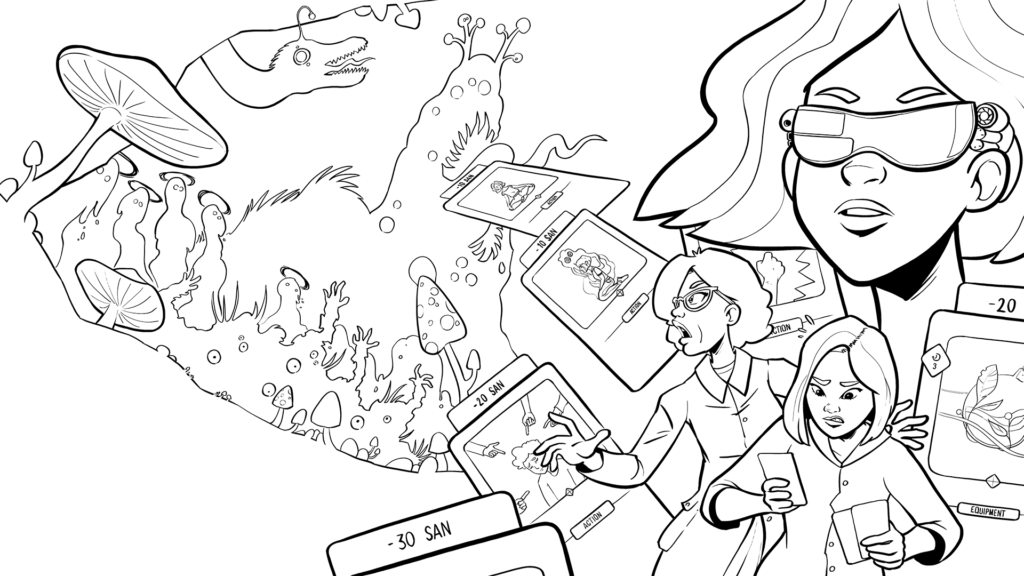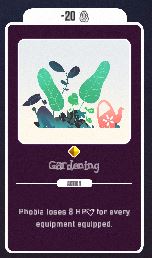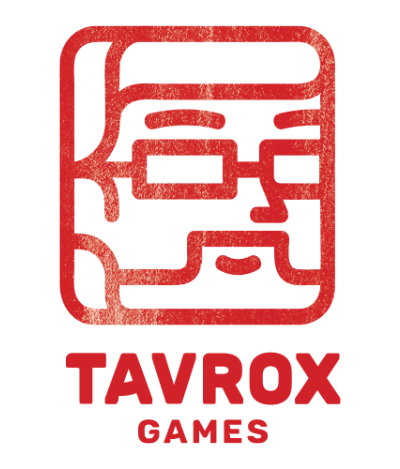This article is part of a series that will cover the game design of Neurodeck, our roguelite/deckbuilder game. You can learn more about the game on its Steam page, or join its open alpha on our Discord server!

Hi! I’m working with TavroxGames, a French indie video game studio. I am currently helping to make Neurodeck, a roguelite/deckbuilding game where players explore their subconscious mind while fighting phobias. For context purposes, the game is currently in open alpha with a first playable run and regular updates planned in the coming months.
This series will focus on giving readers an insight on the way we conceptualized and developed the design of the game, while trying a new twist on the genre of roguelite/deckbuilders. As the game is still in development, it will also be a way for us to reflect on which paradigms and concepts seem the most interesting, and what worked for us (or didn’t). Let’s start with a brief presentation of the game and its core mechanics.
As said earlier, Neurodeck is a roguelite/deckbuilder: your goal is to go as far as possible in the rooms that represent your subconscious mind, where you will encounter friendly characters, random events and vicious phobias to defeat. You begin each “run” with a standard deck of cards that depends on the base emotion you chose (more on this later), and that will be upgraded through your journey. Of course, there’s a big phobia boss at the end of the maze to challenge you and the strategy you built. Battles take place in a simple way: you draw 4 cards at the beginning of the game, and 2 new cards each turn. Cards are either classic “action” cards, that have a direct effect on the state of the game when used (deal damage to the phobia, various effects…), or “equipment” cards: objects that stay available until fully used or discarded. Playing a card costs “Sanity” and “action points” (AP), two different game resources.
Once equipped, you can activate an equipment’s ability at any time at the cost of one of its durability points and one AP. That’s about all you need to know of the basic game mechanics to understand the remainder of this article — in the future, we will delve a bit deeper in the subject if we feel it’s needed to explain some precise design points.
Even if the genre of roguelite/deckbuilding games is still relatively young, it has already developed well-defined characteristics and dynamics of play. One of the most common of these dynamics is the player’s progression through a defined layout of spaces, fighting stronger enemies while adding/removing cards from their deck. As the card rewards are random and the pool of cards relatively large (even for games that differentiate card pools between characters, such as Slay the Spire or Deck of Ashes), the genre offers a strong replayability between runs.
In Neurodeck, we chose to focus on smaller card pools that are tied to the “emotions” of our characters. Each playable character has different emotions that give the player a permanent bonus in game, such as more starting stamina and sanity or a small heal for each card played. As these induce important changes in gameplay (players can act in a safer way with the first bonus, and will try to play more cards in a turn with the second one), we defined specific card pools for each emotion tied to a character: with the exception of some rare events, players can’t get cards that are not emotion-related or globally tied to the character (all the emotions of one specific character share some common cards). Characters are differentiated by these common cards and mechanics and by the fact that all their emotions share the same “ability”, an action usable by the player at any point in their turn (for example, Jupiter can spend sanity and 1 AP to draw a card).
To develop these card pools, we used a taxonomy commonly used in the Slay The Spire community to help clarify our design intents: we classified cards as “Set-Up” and “Pay-Off”.
- A “set-up” card is a card you might want to play for its effect alone, but that also allows a chain reaction with other cards. Basically, “set-up” cards are those you want to play in order to maximize a precise effect. Common “set-ups” in deckbuilder games include poison debuffs to the enemies (damage scaling over time) or strength buffs to the character (that also allows the player to scale damage over multiple turns, but in a different way). Set-ups do not exist “by themselves”, but are tied to specific pay-offs : if that wasn’t the case, you could have strength and poison cards in your deck and that would basically be it, as you would be given no incentives to choose one of the two specific directions.
- A “pay-off” card is a card that offers a strong synergy with a particular set of “set-ups”. To keep the example of poison debuffs, it’s the case of abilities that have additional effects when the target is poisoned. The idea here is that you are rewarding the player for performing a set of specific actions: a defined strategy, sometimes directly associated with tied keywords. Pay-offs offer a strong indicator to the player about how your game system is working, and what they must do in order to take advantage of it. The idea here is of course to balance the price and power of the different pay-offs, but also to offer different ways to reward the player for performing a specific set of actions: strong but hard-to-reach payoffs offer a clear indicator by showing an impressive sheer amount of damage, but a lot of medium-sized and simple-to-reach payoffs give a lot of consistency and viability to a precise strategy.

We call a group of “set-up” and “pay-off” cards that work together an “archetype”, because it allows players to correctly quote and reference this group of elements. To put it simply, it’s that moment where you decide that you love fire-based attacks because they synergize well with one another: you could say to a friend or on an online forum that the “fire build” is your favourite one. This is your way to identify it that matters here: archetypes are deeply tied to the notion of flavour, because you really don’t want players to say that they loved the “HP gain/fire/toolbox/mana regen/…” build. Of course, this would not exactly happen like this but the result would be something like “I played a deck with a lot of cards” which is quite a boring thing to say, and acts as a good indicator that the player didn’t understand what links these elements together.
To sum up, we could say that an archetype is a cohesive group of game elements (in this article we’ll look at cards specifically), that are designed with the intention to give clues to the player about one way to play the game, and convey a common theme or concept. A few more things:
- Common abilities (or keywords, that were popularized by Magic: The Gathering) do not necessarily define an archetype. It helps and constitutes a great indicator for the player, but you can’t make working strategies with any kind of effects: a keyword that adds a bonus effect if the card is the first you play this turn is in essence quite hard to interact with and offers a smaller design space for development, from an archetypal point of view.
- Flavour is also conveyed through art and narration, which is why it’s important to have all these aspects to come together at some point. From a design perspective, it’s more about keeping effects coherent with the other elements and with player expectations (an enemy that is currently “burning” should lose HP).
Here is the prototype of an archetype we are currently working on. It uses the following keywords :
- “Wrath X”: Adds X damage to your attacks. Stacks of this keyword last 3 turns.
- “Sorrow X”: At the end of your turn, discard X cards from your hand. Stacks of this keyword also last 3 turns.
The global gameplay idea we are trying to convey is “you have fewer cards, but they are stronger”. Costs in Sanity points are not included on this board, mostly because we expect balancing changes to happen during playtests.
There are two axes to this archetype:
-> “Wrath is good” (Pay-offs: Frustration, Ricochet)
-> “Discard is good” (Pay-offs: Full page, Letting go).
However, several setup cards (Punching Ball, Alcohol, Fit of Rage) use a mix of the two different effects, and allow players to trade cards for stacks of “Wrath”. As these cards synergise with both effects, they create an identity that is coherent for the player: “fewer cards, but stronger”. Some of the setup cards like Growth or Shitty Day only act on one of the two axes of the archetype, which is fine in itself (and can help these axes to become independent, creating sub-strategies within an archetype).
We hope you enjoyed reading this. If you want to chat about design or give feedback on this article, ping us on Discord!
Félix MOLL — TavroxGames

